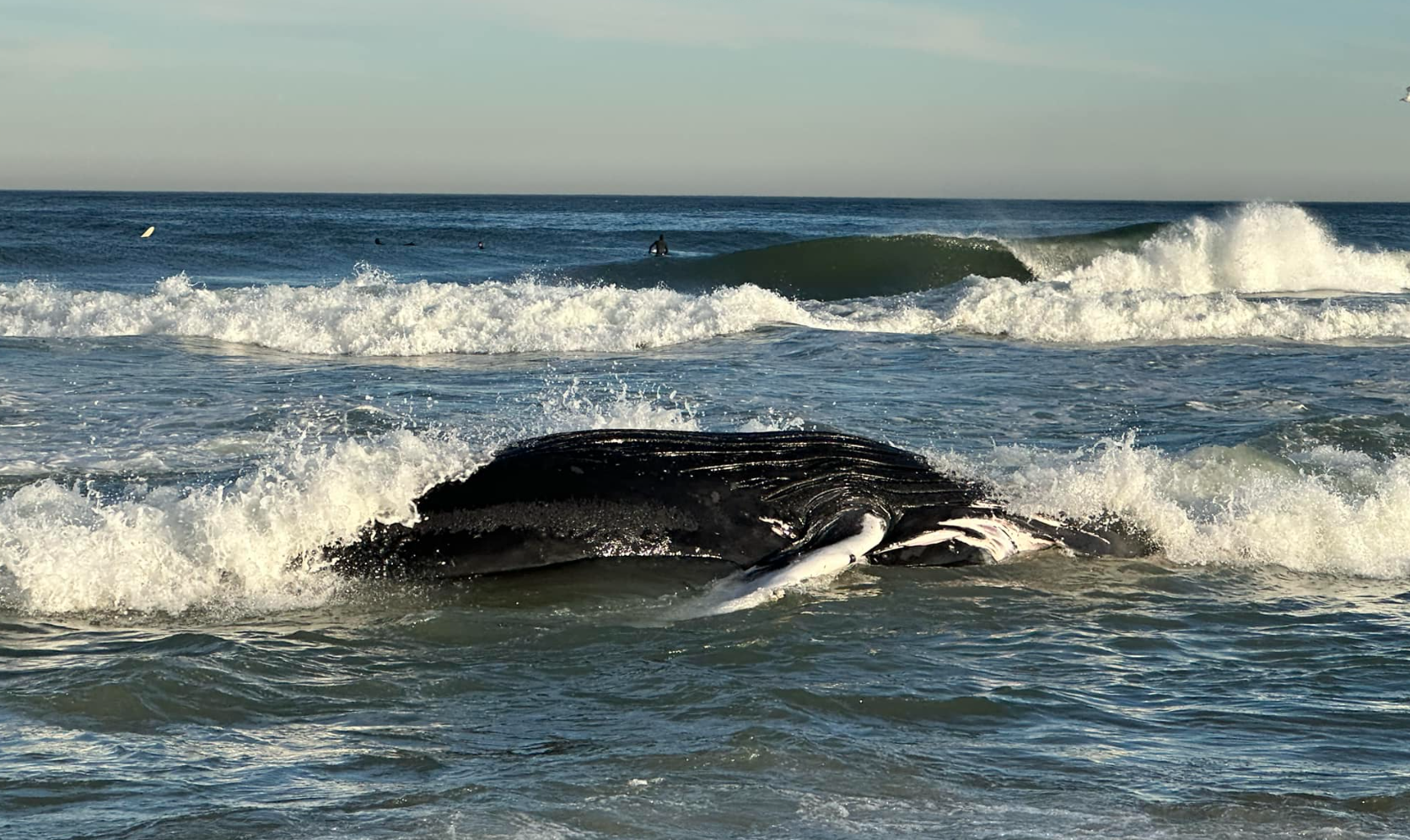The federal Marine Mammal Commission this week weighed in on recent Mid-Atlantic whale strandings, saying the numbers are consistent with dangers faced by a growing humpback whale population.
Like the National Oceanic and Atmospheric Administration, the MMC rejected claims that the strandings are linked to survey vessels working on offshore wind energy sites.
“Despite several reports in the media, there is no evidence to link these strandings to offshore wind energy development,” the commission said in a Feb. 21 statement.
“Although these strandings have generated media interest and public scrutiny, humpback whale strandings are not new…nor are they unique to the U.S. Atlantic coast,” according to the commission.
Since January 2016 NOAA has been tracking what it calls an “unusual mortality event” among humpback whales, with elevated strandings that now number more than 180 animals.
“In fact, ten or more humpback whales have stranded each year during the UME, with a high of 34 in 2017,” according to the Marine Mammal Commission. “As the Gulf of Maine stock of humpback whales continues to grow, more young animals are choosing to overwinter along the Atlantic coast where they are vulnerable to being struck by ships and becoming entangled in fishing gear.”
Offshore wind opponents contend that recent strandings may have resulted from whales being disoriented by low-frequency sound emitted during geophysical surveys of offshore wind sites. Necropsies on whale carcasses showed several evidently struck by vessels, but investigators say they are unable to determine if whales might have suffered hearing loss.
The MMC memo notes research on the increasing humpback population numbers, and their migration patterns along the U.S. East Coast near major ports. Vessel strikes are a dire hazard to the highly endangered North Atlantic right whale.
A dead right whale stranded at Virginia Beach, Va., Feb. 12, and a necropsy on the 20-year-old, 43-foot male “determined the whale suffered a catastrophic blunt force traumatic injury, impacting the vertebral column,” the MMC report notes. “The injuries, consistent with vessel strike, included multiple vertebral fractures that would have resulted in death shortly after the injury. The whale was in normal to thin nutritional condition, with no evidence of recent entanglement.”
“Today, there are fewer than 350 North Atlantic right whales in existence, with fewer than 95 mature females in the population,” according to the commission. “An Unusual Mortality Event was declared for North Atlantic right whales in 2017, and currently includes 97 individuals (36 dead, 22 seriously injured, and 39 sub-lethally injured or ill).
“Between 2003 and 2018, in cases where a cause of death could be determined, every juvenile and adult right whale death was attributable to human activities…After the first year of life, right whales do not live long enough to die of natural causes. In addition, sub-lethal effects of ship strikes and entanglement can impair the growth and reproduction of right whales and further impair their recovery.”
NOAA now has declared seasonal management areas in place to protect right whales off all major ports along the Mid-Atlantic through April 30, where all vessels 65 feet or longer must travel at 10 knots or less. The agency is proposing to expand those seasonal vessel speed limits to boats between 35 and 65 feet, and broaden the limits and timing of those restrictions.
Meanwhile large cargo vessel traffic has been increasing as global trade picked up with the waning of covid-19 restrictions. During 2022 the Port of New York and New Jersey handled a record number of cargo containers – nearly 9.5 million TEUs (twenty-foot equivalent units, the global industry standard containers).
That was “an increase of 27 percent from pre-pandemic 2019 annual totals,” according to an announcement from the Port Authority of NY/NJ. “Throughout the year, the port managed a 26-month-long streak of monthly record cargo high activity and became the nation’s busiest container port during the peak months of the holiday shipping season.”
Port traffic is growing off the U.S. Southeast coast as well, with traffic building in and out of Charleston, S.C., Savannah, Ga., and Florida ports. Approaches to those ports lie across whale migration paths, including the right whale calving grounds off Georgia and Florida.
Environmental groups sought emergency action by NOAA to speed up implementation of new vessel speed rules but were rebuffed by the agency is it continues to work on its rule proposal.




